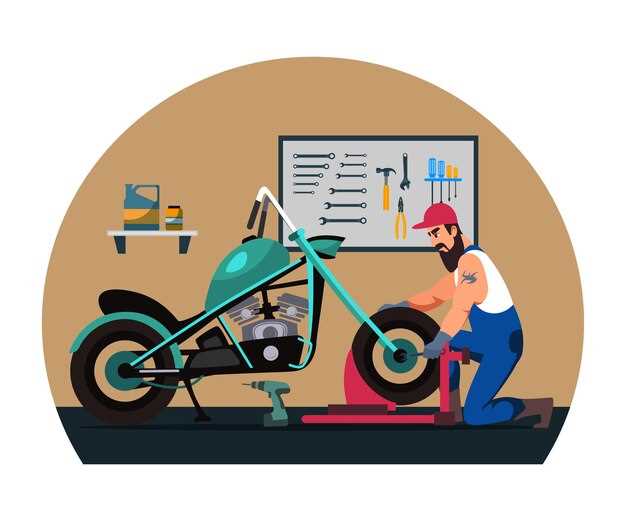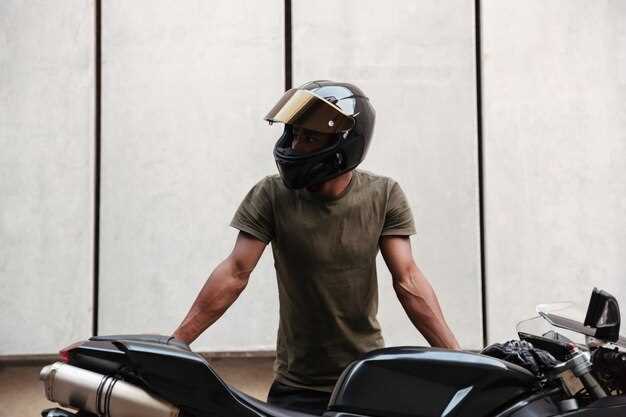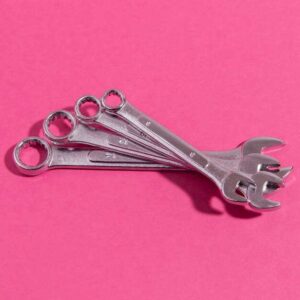Prioritize safety and comfort by choosing high-quality motorcycle gear designed for your riding style. Start with a sturdy helmet that meets DOT or ECE safety standards; this is your first line of defense against injuries. Select a helmet that fits snugly but comfortably, with features like ventilation and a visor for clear visibility.
Next, invest in a durable jacket crafted from leather or abrasion-resistant textiles. Look for armor in critical areas such as shoulders, elbows, and back for added protection. Breathable materials enhance comfort during long rides, allowing for better temperature regulation.
Don’t overlook the significance of protective pants. Reinforced textiles or leather, along with built-in armor at the knees, can greatly reduce the risk of injury. Pair these with high-quality, weather-resistant gloves that provide grip and dexterity while shielding your hands from the elements.
Lastly, choose boots that cover your ankles and have slip-resistant soles. Look for features like reinforced toe and heel areas, which boost safety without compromising comfort. Investing in the right gear not only enhances your riding experience but also ensures you’re prepared for whatever the road may bring.
Evaluating Safety Ratings of Motorcycle Helmets
Choose a helmet that meets or exceeds safety standards like DOT, ECE, or Snell. Each of these certifications tests different aspects of safety. DOT (Department of Transportation) specifies minimum safety requirements in the United States, while ECE (Economic Commission for Europe) offers standards recognized in many countries. Snell goes further by testing for impact and penetration resistance across various speeds.
Check the impact rating. Helmets that score well in impact tests provide better protection in accidents. Look for tests conducted by independent organizations. Several sites offer comparative data on helmet safety performance, helping you make informed choices.
Consider the helmet’s fit and comfort alongside safety ratings. A secure fit enhances protection; if the helmet moves during a ride, it may not perform well upon impact. Ensure a snug fit without pressure points. Many brands offer sizing guides and fitting tools to assist in selecting the right size.
Examine the materials used in the helmet’s construction. High-quality helmets combine a hard outer shell with an inner foam layer designed to absorb impact. Polycarbonate, fiberglass, and Kevlar are common materials that offer varying levels of protection and weight. Choose one that balances comfort and safety.
Pay attention to additional safety features. Some helmets include features like multi-directional impact protection system (MIPS) technology, which reduces rotational forces during an impact. Also, consider visibility elements, like reflective materials or a built-in sun visor, to enhance safety in different riding conditions.
Invest time in reading reviews from other riders about their experiences with specific helmet models. User feedback can provide practical insights beyond official safety ratings, highlighting real-world performance and comfort during rides.
Understanding the Importance of Motorcycle Jackets and Armor
Choosing a motorcycle jacket equipped with armor significantly enhances your safety on the road. Look for jackets made from durable materials such as leather or high-quality textiles that offer abrasion resistance and can withstand harsh conditions.
Prioritize jackets with built-in armor at key impact zones, including shoulders, elbows, and back. CE-rated armor is desirable, as it meets specific safety standards and provides excellent shock absorption capabilities.
Consider the fit of the jacket. A snug yet comfortable fit ensures the armor stays in place during a ride. Features like adjustable straps and ventilation zippers contribute to comfort without sacrificing protection.
- Visibility: Opt for jackets with reflective elements or high-visibility colors to increase your visibility to other drivers.
- Weather Resistance: Choose a jacket with waterproof or water-resistant properties for riding in various weather conditions.
- Pockets: Look for jackets with secure pockets for carrying essentials without compromising safety.
Incorporating layers into your riding experience can also add warmth and comfort. Layering allows you to adjust your comfort level according to changing weather conditions. A thermal liner or a removable insulated layer can be beneficial for colder rides.
Regularly inspect your jacket and armor for signs of wear. Replace any damaged components to maintain optimal protection. Investing in quality gear pays off in the long run by ensuring safety during your rides.
Selecting the Right Type of Gloves for Different Conditions
For warm weather rides, opt for lightweight gloves made from breathable materials like mesh or light leather. These gloves promote airflow, keeping your hands cool while offering a good grip on the handlebars.
In colder temperatures, choose gloves with insulation and a waterproof outer layer. Look for models featuring thermal liners to maintain warmth without sacrificing dexterity. Gauntlet-style gloves that extend over the wrist provide additional protection against wind chill.
Wet conditions require gloves with excellent waterproof capabilities. Explore gauntlet gloves or those with cuffs that seal around your wrists. Waterproof membranes, like Gore-Tex, keep your hands dry while maintaining breathability.
For off-road or adventure riding, prioritize durability and grip. Select gloves reinforced with protective materials such as kevlar or rubber. Look for additional padding in critical areas to prevent injury during falls or impacts.
Finally, consider gloves with touchscreen compatibility if you frequently use navigation devices or smartphones. Ensure the fingertips are designed for touch sensitivity without losing grip quality.
Finding Appropriate Riding Boots for Comfort and Protection
Choose boots designed for riding that offer a blend of comfort and safety. Look for features like a reinforced toe and heel, which protect against impacts and abrasion. Leather or high-quality synthetic materials provide durability and weather resistance, ensuring your feet stay dry and protected in various conditions.
Focus on fit; your boots should feel snug but not restrictive. Consider trying them on with your riding socks to ensure an accurate fit. A boot with a cushioned insole enhances comfort during long rides, reducing fatigue. A non-slip sole improves grip on different surfaces, providing stability when mounting or dismounting your bike.
Look for boots with a breathable lining to maintain airflow and prevent overheating. Waterproof models are ideal if you often ride in wet weather. The height of the boot should cover the ankles; this additional protection is crucial in case of an accident.
Consider features such as adjustable straps or lace systems, which allow a customized fit for added support. Here is a comparison table showcasing key features to look for in riding boots:
| Feature | Description |
|---|---|
| Material | Leather or high-quality synthetic for durability |
| Toe Protection | Reinforced toe for impact resistance |
| Water Resistance | Waterproof lining to keep feet dry |
| Breathability | Airflow design to prevent overheating |
| Height | Above ankle for additional protection |
| Adjustability | Straps or laces for custom fit |
Investing in quality riding boots pays off in comfort and safety, enhancing your overall riding experience. Prioritize these factors to find the right pair that complements your style and keeps your feet protected on every ride.
Choosing the Best Motorcycle Pants Based on Weather and Terrain
Select motorcycle pants designed for the specific weather conditions you’ll face. For hot climates, opt for mesh pants made from breathable materials like nylon or Kevlar. These offer airflow while maintaining protection. Look for pants with removable liners for versatility, allowing you to adapt between hot and cooler conditions.
In cold weather, prioritize insulated pants or those with thermal liners. Waterproof options like Gore-Tex or similar materials help keep you dry. Remember, layered clothing can provide flexibility, so consider pants with pockets for adding insulation when needed.
For wet conditions, choose pants with a waterproof or water-resistant outer layer. Sealed seams enhance protection against rain. Look for reflective elements to increase visibility in gloomy weather. Ventilation options will help regulate temperature when you’re caught in unexpected warm spells.
Terrain also influences your choice. If you plan to ride on rugged surfaces, consider reinforced pants with durable materials. Look for options with padding at the knees and hips for added protection. Cargo-style pants often offer extra pockets for carrying essential gear.
For touring or long-distance rides on highways, prioritize comfort. Pants with stretch fabric ensure flexibility, preventing discomfort during extended periods in the saddle. Features like adjustable waistbands can enhance fit and comfort.
Moto jeans offer a stylish option for casual rides while still providing some protection. Ensure they incorporate abrasion-resistant materials and have armor pockets for knee protection. They work well for urban commuting or short trips.
Matching your pants to expected weather and terrain enhances your riding experience. Consider investing in a couple of quality pairs for various conditions to stay comfortable and protected on any ride.
Assessing the Need for Additional Protective Gear and Accessories
Evaluate your riding style and environment. If you frequently ride in urban areas with heavy traffic, consider investing in armor enhancements for your jacket and pants. These additions can provide crucial protection during potential spills or collisions. For off-road enthusiasts, knee braces and elbow guards are advisable to shield against impacts and abrasions.
Weather can impact your gear choices. If you ride in varying climates, opt for gear with removable liners for warmth and waterproof capabilities. Heated gloves and layers can significantly enhance comfort during colder rides. A good set of riding glasses can protect your eyes from wind and debris, making them a smart addition.
Don’t overlook the importance of hi-visibility accessories. Reflective vests or decals on your helmet improve your visibility during night rides or low-light conditions. This can help you stay safer on the road by ensuring others see you.
If you carry equipment, invest in a sturdy, weatherproof backpack or tank bag. Look for options with reflective elements to enhance safety. Organizing tools and first-aid supplies in easily accessible compartments makes on-the-go repairs seamless.
Always assess your riding habits. If you travel frequently on longer trips, consider touring gear designed for comfort on extended rides. Padded seats and ergonomic designs help reduce fatigue and enhance your overall riding experience.







